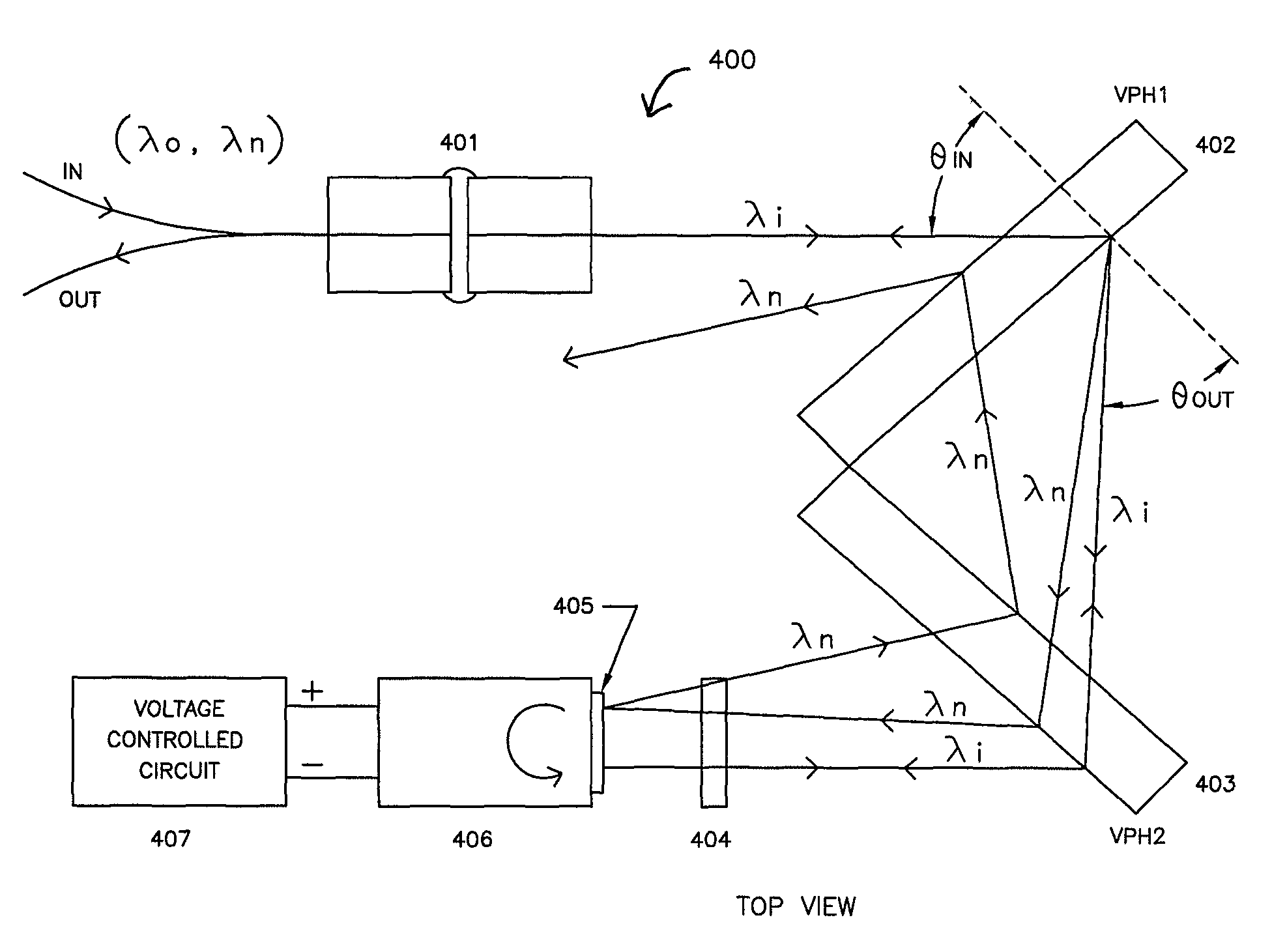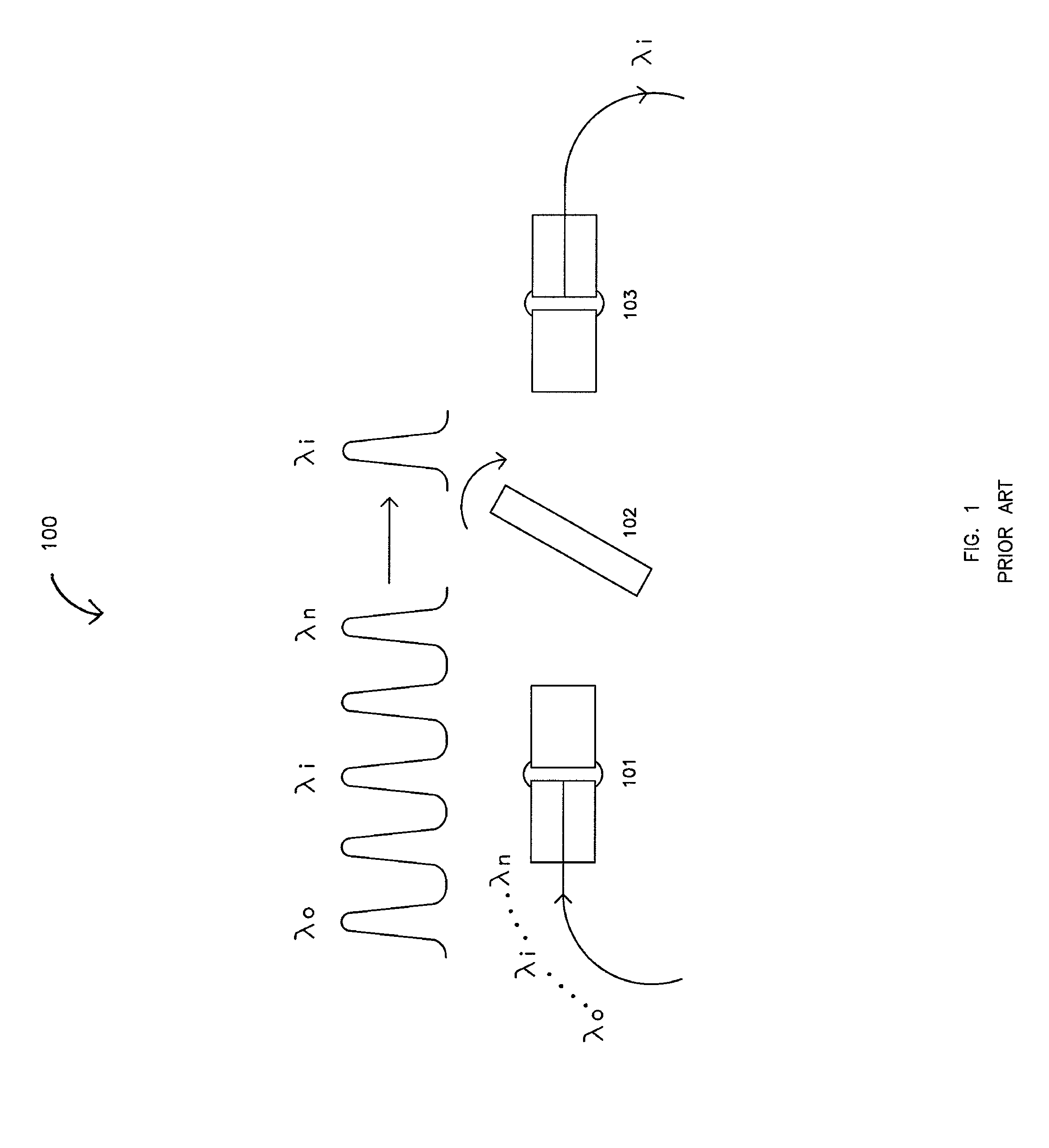Compact high-resolution tunable optical filter using optical diffraction element and a mirror
a tunable, optical filter technology, applied in the field of optical components, can solve the problems of unsuitable multi-million cycle mechanical wear-out mechanism of the motor, unreliable optical characteristics, and large required motor weight, and avoid premature wear-ou
- Summary
- Abstract
- Description
- Claims
- Application Information
AI Technical Summary
Benefits of technology
Problems solved by technology
Method used
Image
Examples
Embodiment Construction
[0030]Tunable optical filters are a key building block of reconfigurable optical communication networks. The ideal tunable optical filter would provide low insertion loss and a wide passband for the selected or desired wavelength(s), while simultaneously providing high isolation of other, non-selected wavelengths. It would provide a wide tuning range, and incorporate a tuning mechanism that was fast and yet not subject to rapid wear-out. Further, the optical characteristics of the tuned or selected passband should not vary as a function of wavelength. Other highly desirable attributes include low cost, compact size, low power consumption, and high reliability.
[0031]The prior art in tunable optical filters typically possess one or more significant shortcomings, including insufficient tuning range, slow tuning speed, rapid wear-out of the tuning mechanism, optical characteristics that vary significantly as a function of the tuned wavelength(s), as well as the typical disadvantages of ...
PUM
 Login to View More
Login to View More Abstract
Description
Claims
Application Information
 Login to View More
Login to View More - R&D
- Intellectual Property
- Life Sciences
- Materials
- Tech Scout
- Unparalleled Data Quality
- Higher Quality Content
- 60% Fewer Hallucinations
Browse by: Latest US Patents, China's latest patents, Technical Efficacy Thesaurus, Application Domain, Technology Topic, Popular Technical Reports.
© 2025 PatSnap. All rights reserved.Legal|Privacy policy|Modern Slavery Act Transparency Statement|Sitemap|About US| Contact US: help@patsnap.com



